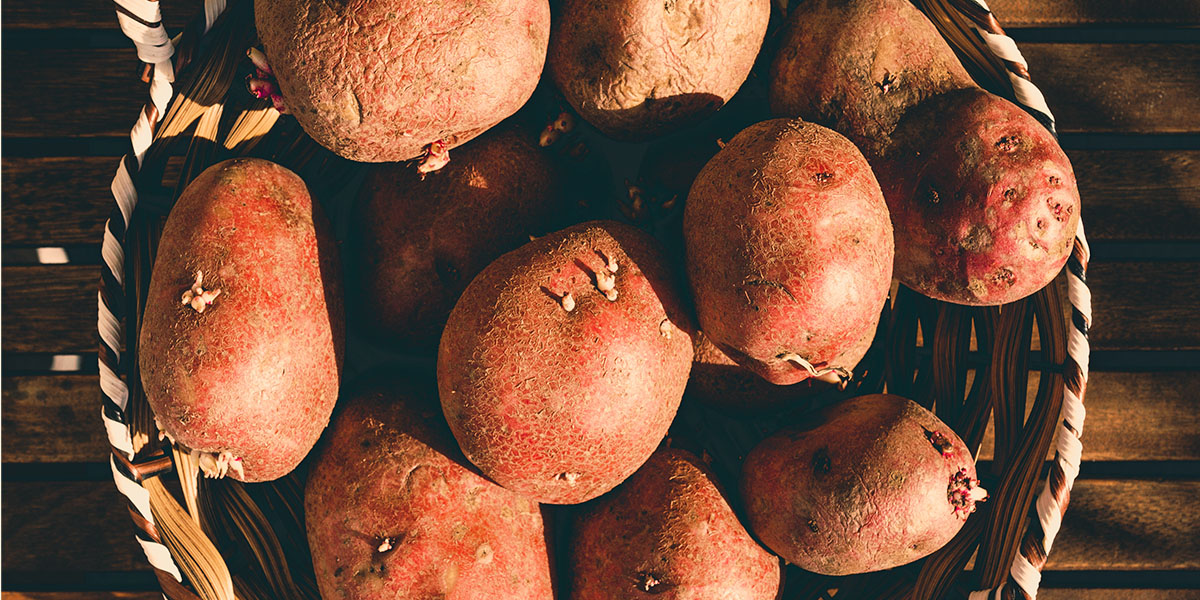Meal planning is the key to keeping your diet balanced without spending a fortune.
7 ways to eat seasonally on a budget
The end of summer doesn’t mean the end of affordable produce. With some planning and flexibility, you can eat seasonally for months to come.

Strawberries, peaches, cherries, and more. It often seems as if everything is in season during the summer. On the other hand, fall and winter can present a greater challenge. Especially if cold weather shows up early in your part of Canada.
The good news? You can eat healthy seasonal produce on a modest budget all year-round. It just takes a little planning and flexibility.
Why is it better to eat in season?
There are many advantages to buying local produce in season. The first is that it probably tastes better. Because it doesn’t have to travel far, local produce has probably been harvested recently. It’s usually fresh and hasn’t had a long journey to lose nutrients along the way.
It’s probably cheaper too. Buying locally means you’re not paying shipping costs to have a head of lettuce delivered to you from another province. And bonus, you’re helping nearby farmers too.
Eat seasonally this fall – and be kind to your wallet – with these tips:
1. Go for root vegetables
Root veggies come into season during the late summer, fall, and early winter. They can help you eat in season long into the cooler months.
Look for sweet potatoes and squash – both of which are packed with vitamin A for immunity. And try some fibre-rich root veggies such as beets. Root vegetables tend to be inexpensive and have a long shelf life. They allow you to save money upfront and avoid food waste because of spoilage.
- Read more: 10 tips for healthy eating on a budget
2. Pick hearty greens
Hardier greens such as kale, cabbage and collard greens not only grow during the fall, but also are some of the healthiest veggies you can eat, says Toronto-based registered dietitian Abbey Sharp. Take advantage of the low seasonal prices to enjoy these veggies raw, roasted, steamed, or braised. And freeze batches to add to soups, casseroles, and smoothies throughout the year.
- Did you know dark green veggies like kale contain essential nutrients for brain function?
3. Know when to go organic
Contrary to popular belief, eating certified organic produce isn’t necessarily better for your health. “Ultimately, the current research suggests there are no nutritional difference between organic versus conventionally grown produce,” says Sharp. So, while organic farming may have environmental benefits, picking up conventional produce is just as good for you from a nutritional standpoint.
- Read more: Is buying organic worth the extra cost?
However, if you want the benefits of organic without the added cost, hit up a farmers’ market and ask the vendors about their produce, recommends Sharp. Securing organic certification can be pricey. Many farmers may follow organic guidelines without pursuing the credential and sell their produce at a lower price point than certified produce.
4. Try fermented and pickled foods
Pickling and preserving is back and on trend. Preserving in-season produce is a great way to eat seasonally and affordably all winter. Fermented, pickled foods are filled with healthy probiotics. Make your own pickles, sauces, salsas, and jellies with the last bumper crops of summer and fall so you can enjoy them all winter long.
5. Join an agricultural community
Do you enjoy getting creative in the kitchen? Is your family adventurous in its eating habits? Are you looking for a way to change things up at the dinner table? If you answered “yes” to any of these questions, you may want to consider joining a winter community-supported agriculture (CSA) organization. A CSA will provide you a share of the crop at a local farm that you’ll pick up each week. It takes the guesswork out of eating seasonally and creates splendid opportunities to try out new vegetables you wouldn’t have picked up otherwise. That said, avoid a CSA share if your family members are picky eaters, says Sharp, or you may find yourself wasting food and money.
6. Fill up on beans and lentils
Fruits and veggies get all the attention when it comes to seasonal eating, but beans and lentils – a.k.a. “pulses” – grow seasonally, too. Pulses can be a fantastic source of fibre and are filled with healthy plant-based protein. “I’m always trying to incorporate more meatless meals into my routine and it’s a great low-cost way to make dinner,” says Sharp. For example, transform chickpeas into a delectable hummus or use white beans to make a wintery stew.
7. Freeze fruits and vegetables
Though not technically seasonal, frozen offerings are one of the easiest and least expensive ways to get nutritional produce year-round. “Frozen fruits and vegetables are picked at the peak of freshness,” says Sharp. “They don’t lose nutrients during transit time.” Throw a handful of frozen veggies into your stir fries, steam them for a quick side dish, or use frozen fruit to add flavour to your smoothies.
What fruits and vegetables are in season in the fall?
The growing season varies from place to place in Canada, but these fruits and vegetables are often in season in the fall:
- Apples
- Beets
- Broccoli
- Brussels sprouts
- Cabbage
- Carrots
- Cauliflower
- Corn (early fall)
- Cranberries
- Grapes (early fall)
- Kale
- Leeks
- Parsnips
- Pears
- Potatoes
- Pumpkins
- Red onions
- Rutabaga
- Spinach
- Squash (winter varieties like acorn, butternut, and spaghetti)
- Turnips
By mixing seasonal foods with always-in-season staples such as frozen produce, you can eat amazing, fresh meals all fall and winter long in a way that's great for your health and your finances.
This article is meant to provide general information only. It’s not professional medical advice, or a substitute for that advice.



